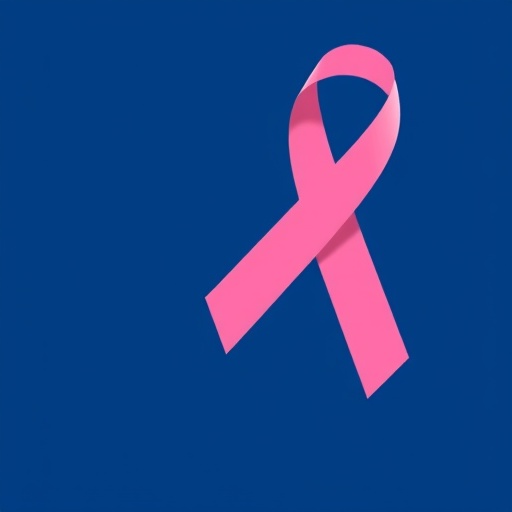A groundbreaking national study led by Dr. Trisha Amboree, an assistant professor at the MUSC Hollings Cancer Center, along with collaborator Dr. Jane Montealegre from The University of Texas MD Anderson Cancer Center, reveals that federally qualified health centers (FQHCs) could be pivotal in reducing cervical cancer disparities in the United States. Their research, recently published in JAMA Network Open, underscores the potential lifesaving impact of expanding cervical cancer screening services through these community healthcare facilities, which serve millions of under-resourced Americans.
Cervical cancer incidence has seen a dramatic decline over recent decades, largely attributed to widespread HPV vaccination and routine screening programs like the Pap smear. However, this downward trend is not equitably experienced across all populations. Dr. Amboree’s previous research has identified troubling increases in cervical cancer, especially late-stage diagnoses, in low-income and rural communities. Such disparities predominantly arise because these populations often lack access to consistent preventive care and screening that can identify precancerous conditions early or prevent them entirely.
FQHCs constitute the backbone of the nation’s safety-net healthcare infrastructure, providing accessible, high-quality primary and preventive services to more than 30 million individuals who frequently face systemic barriers to healthcare access. These centers are primarily funded through Medicaid and federal grants, enabling affordable care for many uninsured or publicly insured women who are at heightened risk for cervical cancer. By leveraging these centers as strategic locations for improved screening interventions, healthcare systems could markedly enhance early detection rates and thus reduce mortality.
Despite their reach, FQHCs currently report cervical cancer screening rates of approximately 55%, which starkly contrast with the national average screening coverage of 74% and still fall short of the Healthy People 2030 target of 79%. This gap highlights a critical missed opportunity to protect vulnerable women from a largely preventable and treatable disease. Expanding the screening coverage at these centers to meet national goals could increase screening among an additional 1.87 million women, potentially shifting overall U.S. screening rates upward by more than two percentage points, a change with profound clinical significance.
The research team utilized extensive datasets covering over 1,300 FQHC organizations, serving a broad demographic cross-section including publicly insured women, rural residents, uninsured individuals, and impoverished populations. Their rigorous analysis demonstrated that enhanced screening implementation within FQHCs would not only elevate overall coverage but substantially narrow longstanding racial, socioeconomic, and geographic disparities affecting cervical cancer outcomes. FQHCs are uniquely positioned to reach these hard-to-reach populations who are most likely to experience gaps in preventive health services.
One of the most compelling aspects of Dr. Amboree and her colleagues’ findings is the identification of modifiable system-level and behavioral barriers impeding screening uptake. Barriers such as transportation challenges, healthcare workforce shortages, financial constraints, and competing life priorities often prevent women from seeking routine screening. Additionally, psychological factors like anxiety surrounding pelvic exams and a lack of awareness about the importance of screening contribute to low participation. Interventions that address these multifaceted obstacles could significantly elevate screening compliance.
Emerging innovations like the FDA-approved self-collected HPV testing offer promising avenues to overcome screening hesitancy and logistical barriers. Unlike traditional Pap smears requiring pelvic exams, self-sampling allows women to collect their own cervical samples privately, increasing acceptability and accessibility. Dr. Montealegre’s prior work demonstrated that offering self-collection options in clinical contexts can double screening rates among previously underscreened women, a finding that could be transformational if integrated more broadly within FQHC programs.
Sustaining progress in cervical cancer prevention will require robust policy support and adequate funding mechanisms. The study emphasizes the critical role of continuous investment in both FQHC infrastructure and Medicaid programs, which constitute the lifeline for millions seeking preventive care. Any reduction in these funding streams risks reversing gains in screening coverage, exacerbating disparities, and increasing the burden of late-stage cervical cancer diagnoses in vulnerable populations.
Cervical cancer stands apart from many other malignancies in its preventability and treatability. The combination of HPV vaccination, effective screening, and timely intervention to remove precancerous lesions results in a five-year survival rate upwards of 91% when detected early. However, survival plummets to less than 20% once the disease progresses to advanced stages. This stark contrast amplifies the urgency of optimizing screening programs and closing existing gaps within underserved communities.
Dr. Amboree underscores a powerful message: cervical cancer screening is a controllable factor in an often unpredictable health landscape. Ensuring access to screening can empower women with cervixes to protect themselves proactively. By prioritizing cervical screening—whether through traditional Pap tests or innovative self-sampling techniques—healthcare providers and policymakers together can make substantive strides toward eliminating this largely preventable cancer.
The study’s findings hold significant implications for public health strategies and underscore the fundamental role of community-based health centers in achieving health equity. FQHCs’ existing relationships with marginalized communities position them as essential hubs for education, patient navigation, and culturally sensitive outreach, making them ideal platforms to boost screening rates and facilitate early detection.
In conclusion, this research illuminates a clear pathway to substantially decrease cervical cancer disparities and improve population health outcomes through targeted investment and innovative screening policies within FQHCs. The authors advocate for integrated approaches combining accessible screening options, sustained funding, and policy reforms to ensure every woman has the opportunity to receive lifesaving preventive care. The battle against cervical cancer demands a coordinated response that elevates care accessibility, particularly for those historically left behind by the healthcare system.
Subject of Research: People
Article Title: National Impact of Improving Cervical Cancer Screening Coverage in Federally Qualified Health Centers
News Publication Date: 22-Oct-2025
Web References: http://dx.doi.org/10.1001/jamanetworkopen.2025.38593
References: Amboree T, Montealegre J, et al. National Impact of Improving Cervical Cancer Screening Coverage in Federally Qualified Health Centers. JAMA Network Open. 2025; DOI:10.1001/jamanetworkopen.2025.38593
Image Credits: Medical University of South Carolina
Keywords: Health care delivery, Cancer screening, Cancer research, Health equity
Tags: cervical cancer screeningscommunity healthcare initiativesfederally qualified health centershealth equity in cancer carehealthcare disparitiesHPV vaccination impactJAMA Network Open researchlow-income community healthnational health studiesPap smear effectivenesspreventive care accessrural healthcare challenges





